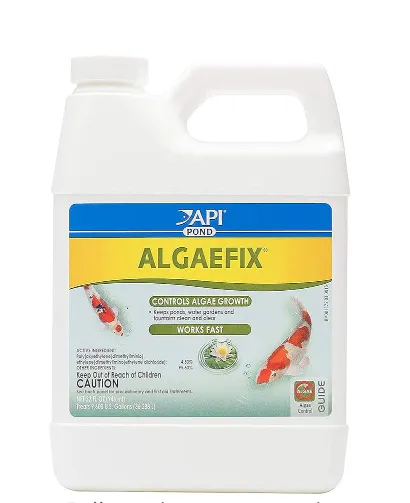


Koi Fish Sickness Symptoms: Comprehensive Guide to Causes, Diagnosis, and Prevention
Caring for koi fish, often referred to as the “living jewels” of aquatic gardens, requires diligence and a keen eye. These ornamental fish are prized for their beauty and grace, but their health can deteriorate quickly without proper care. Understanding koi fish sickness symptoms is the first step to ensuring a thriving pond environment. This guide delves deep into recognizing, diagnosing, and preventing illnesses, offering actionable advice for koi enthusiasts.
What Defines a Healthy Koi Fish?
A healthy koi fish is an active swimmer with vibrant, uniform coloration. Its fins are smooth and free from fraying, while the scales lie flat, reflecting a glossy sheen. Observing these characteristics regularly ensures you can quickly detect any deviation that may indicate illness.
Common Koi Fish Sickness Symptoms
Physical Symptoms
- Ulcers and Lesions: Open sores with redness or white edges, often caused by bacterial infections.
- Fin and Tail Rot: Fraying and discoloration, progressing to complete fin loss if untreated.
- Swelling (Dropsy): A bloated appearance with protruding scales, often signaling internal infection.
- White Spots: Indicative of Ichthyophthirius multifiliis (Ich), a common parasitic infection.
- Cloudy or Bulging Eyes: Signs of internal infections or poor water quality.
Behavioral Symptoms
- Erratic Swimming: Sudden darting or spiraling could indicate parasite infestation or stress.
- Lethargy: Prolonged inactivity or resting at the bottom of the pond.
- Surface Gasping: Suggests oxygen deprivation or gill issues.
- Loss of Appetite: A common symptom of illness or stress.
Top Causes of Koi Fish Sickness
Water Quality Issues
Unhealthy water conditions are a leading cause of koi illnesses. Parameters to monitor include:
- Ammonia and Nitrite Levels: Toxic even at low concentrations.
- pH Imbalance: Ideally maintained between 6.8 and 8.2.
- Temperature Swings: Sudden changes weaken koi immune systems.
Parasitic Infestations
Parasites such as anchor worms, flukes, and fish lice can latch onto koi, causing irritation, inflammation, and secondary infections. Regular inspections are crucial for early detection.
Stress Factors
Stressors like overcrowding, predator threats, or sudden environmental changes can suppress koi immune responses, making them vulnerable to disease.
Comprehensive List of Koi Fish Diseases
Bacterial Infections
- Aeromonas and Pseudomonas: Lead to ulcers, fin rot, and systemic infections.
- Columnaris Disease: Characterized by lesions and cotton-like patches on the skin.
Parasitic Diseases
- Ich (White Spot Disease): Caused by protozoan parasites, appearing as white specks on the skin.
- Flukes: Microscopic worms damaging gills and fins.
Fungal Infections
- Saprolegnia: Results in cotton-like growths on wounds or damaged tissue.
Viral Illnesses
- Koi Herpesvirus (KHV): A highly contagious disease causing rapid gill damage and high mortality rates.
Diagnosing Koi Fish Illness
Early diagnosis improves treatment success rates. Tools and techniques include:
- Visual Inspections: Regularly observe koi for physical abnormalities or behavioral changes.
- Water Testing Kits: Monitor pH, ammonia, nitrites, and nitrates to ensure a healthy environment.
- Microscopic Analysis: Identify parasites by examining skin and gill scrapes under a microscope.
Treating Koi Fish Sickness
Medications and Treatments
- Antibiotics: Effective against bacterial infections but should be administered under professional guidance.
- Antifungal Solutions: Treat cotton-like growths caused by fungal infections.
- Anti-Parasitic Medications: Target flukes, lice, and anchor worms.
Natural Remedies
- Salt Baths: Help reduce parasites and improve osmotic regulation.
- Garlic Additives: Boost koi immunity and deter some parasites.
Isolating Sick Fish
Quarantine tanks are essential for preventing disease spread. Use aeration and frequent water changes to create a stress-free recovery zone.
Preventing Sickness in Koi Ponds
Maintain Optimal Water Quality
- Use high-quality filtration systems.
- Regularly clean debris and replace a portion of pond water.
Provide a Balanced Diet
- Feed koi nutrient-rich pellets supplemented with fresh fruits and vegetables.
- Avoid overfeeding to reduce waste buildup.
Control Pond Stressors
- Ensure adequate space for each fish (50 gallons per adult koi is recommended).
- Use netting or barriers to protect koi from predators.
Implement Preventive Equipment
- UV Sterilizers: Reduce harmful pathogens in the water.
- Aerators: Maintain oxygen levels, especially during warm weather.
FAQs About Koi Fish Sickness Symptoms
What are the first signs of sickness in koi fish?
Watch for changes in swimming behavior, appetite, or physical appearance, such as spots or frayed fins.
How do I treat ulcers on koi fish?
Clean the wound with an antiseptic and treat the pond with antibacterial solutions to prevent secondary infections.
Can poor diet lead to koi fish illness?
Yes, an imbalanced diet weakens immunity, making koi susceptible to infections.
Do koi need a quarantine period?
Always quarantine new fish for 2–4 weeks to avoid introducing diseases into the pond.
What is the role of UV sterilizers in koi ponds?
They help control algae and eliminate waterborne pathogens, creating a healthier pond environment.
Conclusion: Prioritizing Koi Health
Koi fish sickness symptoms provide critical clues to underlying health issues. By maintaining optimal water quality, providing a nutritious diet, and addressing illnesses promptly, you can ensure your koi live long, vibrant lives. Regular monitoring and preventive care are your best allies in safeguarding the beauty and vitality of your koi pond.
You may also like
- https://giobelkoicenter.com/how-often-should-you-feed-koi-fish/
- https://giobelkoicenter.com/karashigoi-the-yellow-jewel-of-the-koi-world/
- https://giobelkoicenter.com/how-fast-do-koi-fish-grow/
- https://giobelkoicenter.com/10-fun-facts-about-koi-fish/
- https://giobelkoicenter.com/buying-koi-fish/